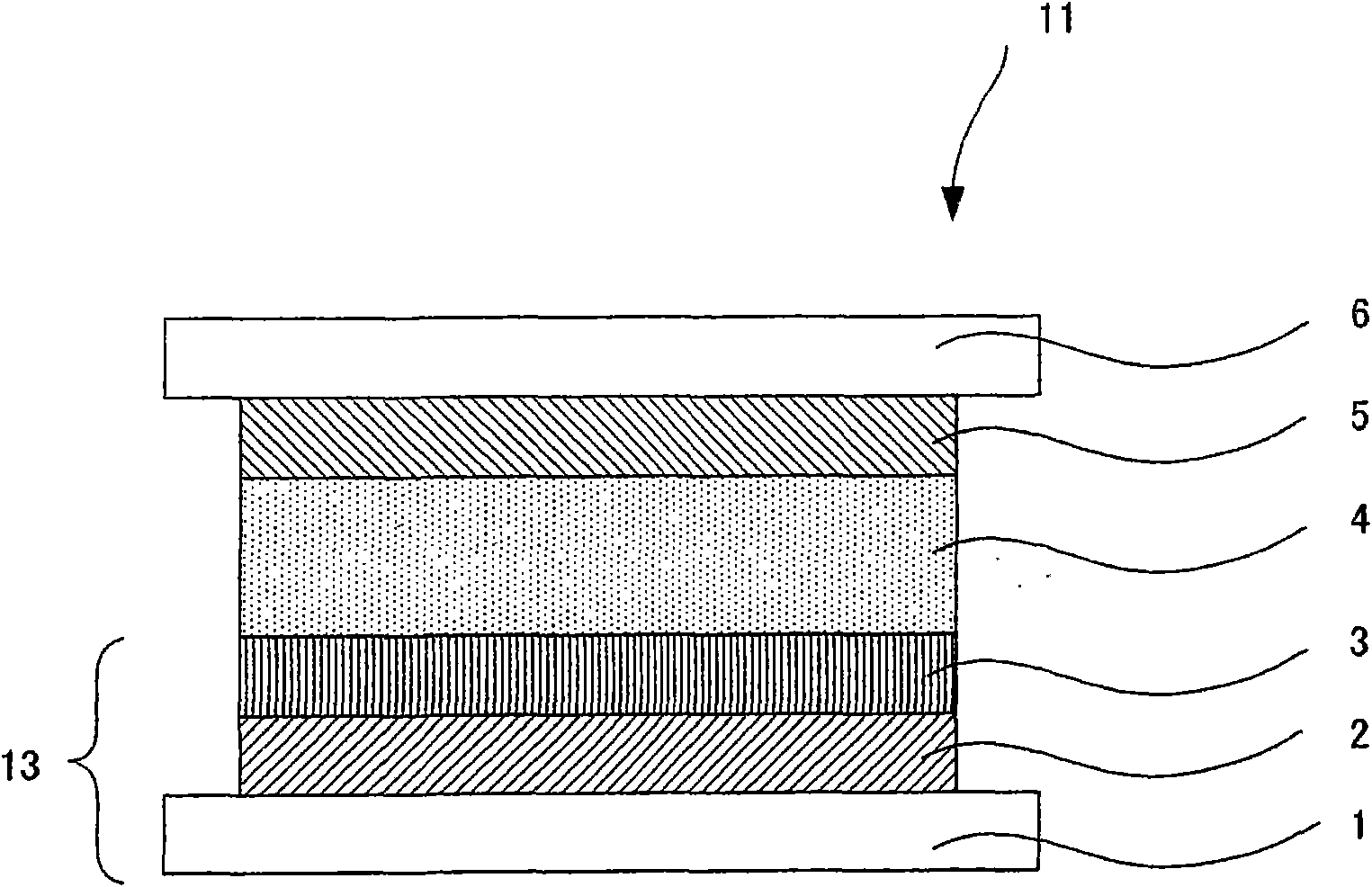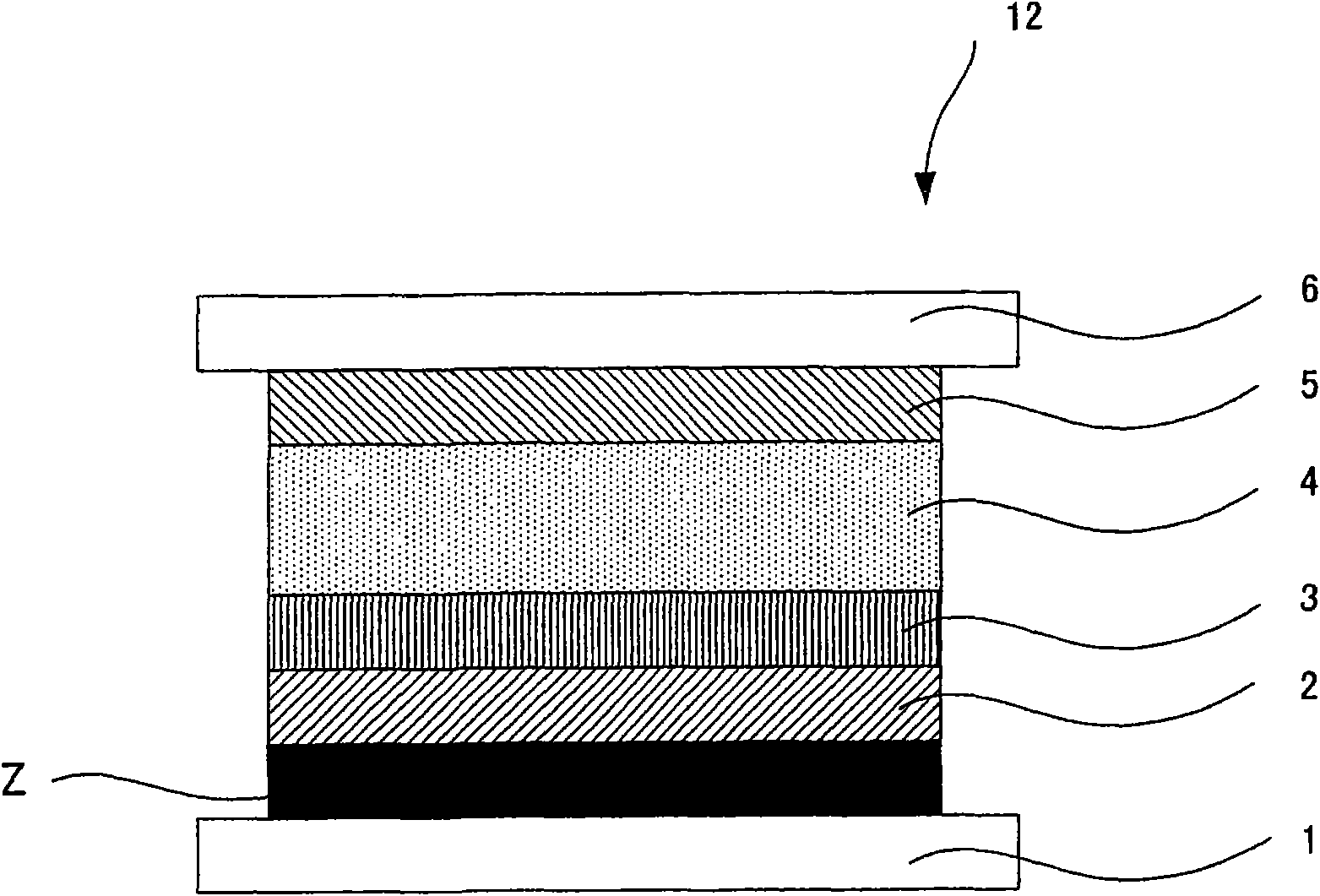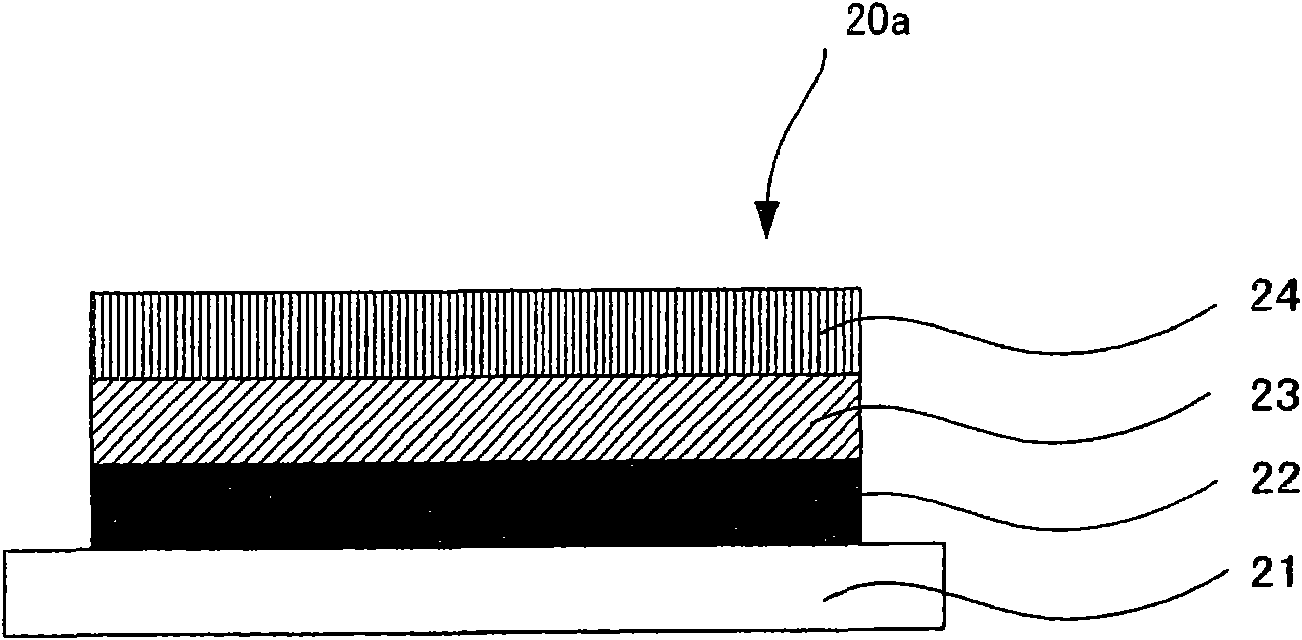Oxide semiconductor electrode, dye-sensitized solar cell, and, method of producing the same
A technology of oxide semiconductor and manufacturing method, applied in semiconductor/solid-state device manufacturing, semiconductor device, capacitor electrode and other directions, can solve the problems of poor practicability, low energy conversion efficiency, and difficulty in dye-sensitized solar cells, etc. To achieve the effect of excellent stability over time and strong adhesion
- Summary
- Abstract
- Description
- Claims
- Application Information
AI Technical Summary
Problems solved by technology
Method used
Image
Examples
Embodiment 1
[0527] 1. Formation of porous layer
[0528] (1) Formation of layer for oxide semiconductor layer formation
[0529] As a coating solution for forming an oxide semiconductor layer, titanium oxide paste Ti-Nanoxide D (manufactured by Solaronix) with a particle size of about 13 nm was used. °C for 30 minutes.
[0530] (2) Firing
[0531] The layer for forming an oxide semiconductor layer was fired at 500° C. for 30 minutes under an atmospheric pressure atmosphere using an electron muffle furnace (P90 manufactured by Denken Co., Ltd.). Thus, a porous layer formed as a porous body is obtained.
[0532] 2. Formation of the first electrode layer
[0533] As the first electrode layer forming composition, a composition obtained by dissolving 0.1 mol / l of indium chloride and 0.005 mol / l of tin chloride in ethanol was prepared. Thereafter, the heat-resistant substrate that has been fired is set on a flat baking pan (400° C.), with the porous layer upward, and the first electrode is...
Embodiment 2
[0549] A dye-sensitized solar cell was fabricated by the same method as in Example 1 except that a porous layer was formed by the following method.
[0550]
[0551] (1) Formation of interlayer forming layer
[0552] As a coating solution for interlayer formation, TiO with a primary particle size of 20 nm 2 Particles (P25 manufactured by Nippon Aerosil Co., Ltd.) and acrylic resin (molecular weight: 25,000, glass transition temperature: 105° C.) (BR87 manufactured by Mitsubishi Rayon Co., Ltd.) reached 1% by mass, and the resin was dissolved in a paint shaker (paintshaker). After being dissolved in methyl ethyl ketone and toluene, the TiO 2The fine particles were dispersed to prepare a coating liquid for interlayer formation. On an alkali-free glass substrate (thickness: 0.7 mm) prepared as a heat-resistant base material, this coating liquid for interlayer formation was coated with a wire bar, and dried.
[0553] (2) Formation of layer for oxide semiconductor layer format...
Embodiment 3
[0567] As a coating solution for interlayer formation, TiO with a primary particle size of 20 nm 2 The particle (Nippon Aerosil Co., Ltd. P25) is 1% by mass, and the main component is polymethylmethacrylate acrylic resin (molecular weight: 25,000, glass transition temperature: 105°C) (Mitsubishi Rayon Co., Ltd. BR87) is 10% by mass. After the homogenizer dissolves the resin in methyl ethyl ketone and toluene, the TiO 2 The fine particles were dispersed to prepare a coating liquid for interlayer formation. This coating solution was coated on an alkali-free glass substrate (thickness: 0.7 mm) prepared as a heat-resistant base material using a wire bar, and dried. Thereafter, masking was performed in a region of 1 cm×1 cm, and regions other than the region were dissolved and removed with methyl ethyl ketone, thereby obtaining a pattern for forming an interlayer having a region of 1 cm×1 cm.
[0568] As a coating solution for forming an oxide semiconductor layer, TiO with a prim...
PUM
| Property | Measurement | Unit |
|---|---|---|
| density | aaaaa | aaaaa |
| particle diameter | aaaaa | aaaaa |
| particle diameter | aaaaa | aaaaa |
Abstract
Description
Claims
Application Information
 Login to View More
Login to View More - R&D
- Intellectual Property
- Life Sciences
- Materials
- Tech Scout
- Unparalleled Data Quality
- Higher Quality Content
- 60% Fewer Hallucinations
Browse by: Latest US Patents, China's latest patents, Technical Efficacy Thesaurus, Application Domain, Technology Topic, Popular Technical Reports.
© 2025 PatSnap. All rights reserved.Legal|Privacy policy|Modern Slavery Act Transparency Statement|Sitemap|About US| Contact US: help@patsnap.com



